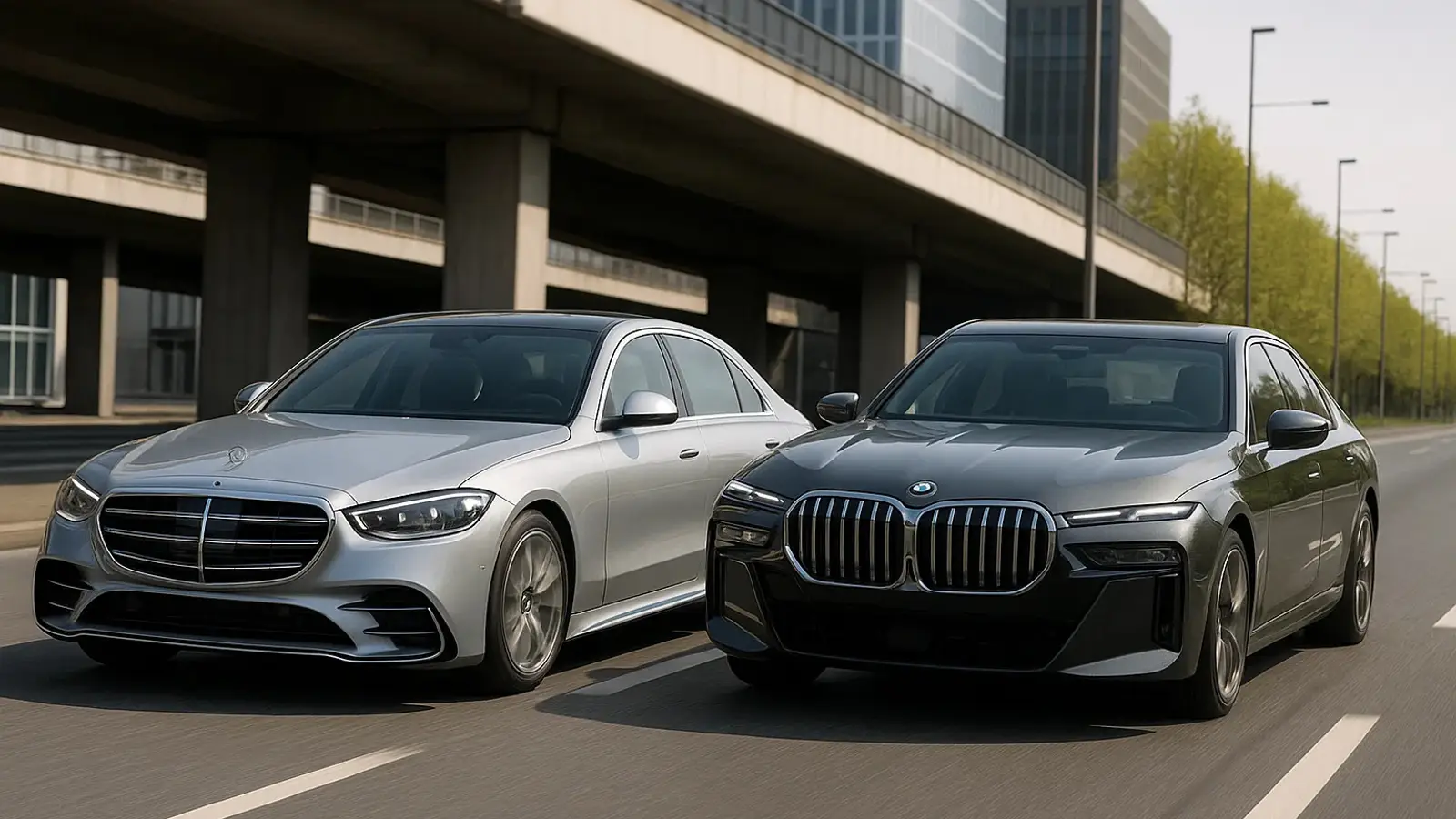News
BMW vs Mercedes-Benz Q3 2025 results: electrification and market trends

BMW and Mercedes-Benz report diverging results in Q3 2025 — BMW posts growth driven by Europe and MINI, while Mercedes faces declines in China and the US despite EV progress and a strong Top-End mix.
BMW and Mercedes-Benz ended Q3 2025 with contrasting dynamics and different qualities of growth. BMW’s automotive deliveries rose to 588,300 (+8.8% year over year), reaching 1,795,894 year-to-date (+2.4%). MINI (72,376; +37.5% YoY) and BMW M (52,220; +11.0%) provided the strongest lifts, while the BMW brand advanced steadily (514,620; +5.7%). Electrified volumes (BEV+PHEV) reached 151,282 in Q3 (+8.0% YoY). BEVs totaled 102,864 (−0.6% YoY) in the quarter but remained up year-to-date (+10.0% to 323,447), with electrified vehicles at 470,313 (+15.0%). Regionally, Europe (+9.3% in Q3) and the U.S. (+24.9%) led gains; Asia was flat and China underperformed (−0.4% in Q3; −11.2% YTD).
Mercedes-Benz reported 525,300 cars and vans sold in Q3. Passenger cars were 441,500, down quarter-on-quarter (−3%) and year-on-year (−12% versus Q3 2024). The company highlighted growth in Europe (including Germany +3%, Spain +5%, Poland +20%), the Gulf States (+33%) and South America (+45%), while noting weakness in China and tariff headwinds in the U.S. The Top-End cluster reached 67,800 units and a 15.4% share, with S-Class, Mercedes-Maybach, G-Class and AMG contributing. EV momentum turned positive within the quarter: group BEVs were 51,200 (+22% QoQ; +9% YoY), and Mercedes-Benz Cars BEVs were 42,600 (+22% QoQ; flat YoY). Plug-in hybrids also rose (+20% QoQ). Vans recorded 83,800, including 8,600 eVans (+25% QoQ); in Europe, eVans accounted for 14% of van sales.
Three critical angles frame the comparison. First, baseline comparability: BMW reports pure automotive volume, while Mercedes-Benz’s headline mixes cars and vans; on a like-for-like car basis, BMW’s edge widens. Second, geography: BMW’s growth is broader outside China—Europe and the U.S. offset China’s drag—whereas Mercedes-Benz’s exposure to its two weakest markets (China and the U.S.) is higher, so even a strong premium backbone cannot fully offset core-line volume losses. Third, electrification: BMW’s BEV trend is positive year-to-date but softer in Q3; Mercedes-Benz shows a clear quarter-on-quarter inflection from the electric CLA and improved eVans availability, though durability of that momentum still needs year-on-year confirmation for passenger cars.
Shared risk factors—China’s price competition and U.S. tariffs—weigh on both groups. The tone of disclosures reflects caution: BMW emphasizes a slight year-to-date increase supported by MINI and M, while Mercedes-Benz focuses on “setting the stage” for further growth via its post-IAA product wave and a higher Top-End share. Bottom line: BMW wins the quarter on volume breadth; Mercedes-Benz counters with mix quality and intra-quarter EV acceleration, but without a recovery in core volumes the overall picture remains uneven. Execution on launch calendars (electric CLA and electric GLC for Mercedes-Benz; new iX3 for BMW) and the trajectory of China pricing will be decisive.
2025, Oct 09 15:30


